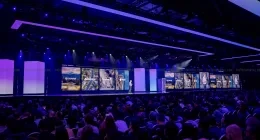OpenAI has released group chats for ChatGPT, introducing its maiden shared experience for end users and moving the chatbot closer to collaborative productivity tools offered by rivals Meta and Anthropic. The feature is being rolled out as a limited pilot across Japan, South Korea, Taiwan and New Zealand, with a wider launch expected after the company evaluates early usage.
The introduction of group chats makes OpenAI the latest firm to enable multi-user collaboration with AI assistants. Meta AI supports group participation in Messenger and Instagram threads, while Anthropic’s Claude Projects feature allows multi-person workspaces oriented around task planning and document sharing. OpenAI said the feature will remain limited to the four pilot markets as it gathers feedback and refines group-based behaviors. A global expansion is expected “over time,” though the company did not specify a timeline.
The update allows between one and 20 users to participate in a single conversation with ChatGPT, bringing multi-party coordination, shared planning and group-based AI assistance into the platform for the first time. Any logged-in ChatGPT user — paid or free — can join a group via an invitation link generated in the app. “Today, we’re beginning to pilot a new experience in a few regions that makes it easy for people to collaborate with each other—and with ChatGPT—in the same conversation. With group chats, you can bring friends, family, or coworkers into a shared space to plan, make decisions, or work through ideas together. Whether you’re organizing a group dinner or drafting an outline with coworkers, ChatGPT can help. Group chats are separate from your private conversations, and your personal ChatGPT memory is never shared with anyone in the chat,” the AI firm announced in a blog post.
Users can start a group chat by tapping a new icon in the chat window, which produces a joinable URL for others. When an existing one-on-one conversation is converted into a group, ChatGPT automatically duplicates the original thread to preserve the private chat history before adding new participants. Responses within group chats are generated using GPT-5.1 Auto, a routing system that selects the strongest available model for each participant. As a result, members with different subscription tiers may receive tailored responses depending on whether they have access to higher-capacity models. Rate limits apply only when ChatGPT itself responds, allowing group members to converse freely without triggering model usage.
Every user joining a group is prompted to create a profile with a name, username and photo to improve identification within the thread. Group chats appear in a dedicated section of the app’s sidebar for easy access. OpenAI said ChatGPT adopts “new social behaviors” in group settings, responding only when contextually relevant instead of reacting to every message. The model can also be directly invoked by mentioning it, mirroring tagging conventions used in collaboration software. It can react to messages with emojis and reference profile photos in its responses. Group creators can add or remove members, while participants may rename threads or mute notifications. Each group chat can have custom instructions that govern ChatGPT’s behavior in that specific room without affecting the user’s broader account settings.
OpenAI said ChatGPT memory is disabled inside group chats, and content shared in these conversations does not contribute to users’ personal memory stores. Any group member may exit at any time, and participants — except the creator — can be removed if necessary. If a user below the age of 18 joins a group, safety filters for sensitive content are automatically applied to every participant in that conversation. Parents and guardians can disable group chat access entirely through parental controls.
With this, OpenAI seems to be taking out a page from the book of social media giants, wherein engagement rates have seen sizeable upticks when multiple users are working together. Instead of individuals consulting ChatGPT separately, users can now coordinate travel plans, discuss purchases, edit documents, and more, all with the AI present as a contextual participant. For professional and educational use, the feature reduces friction in collaborative tasks where people previously had to forward ChatGPT outputs manually or replicate prompts across devices.
The Tech Portal is published by Blue Box Media Private Limited. Our investors have no influence over our reporting. Read our full Ownership and Funding Disclosure →






